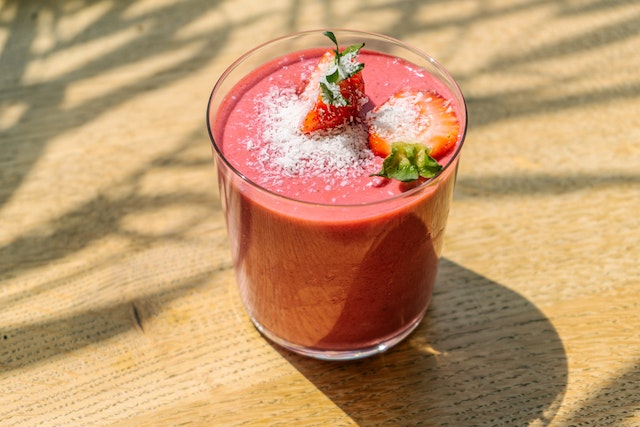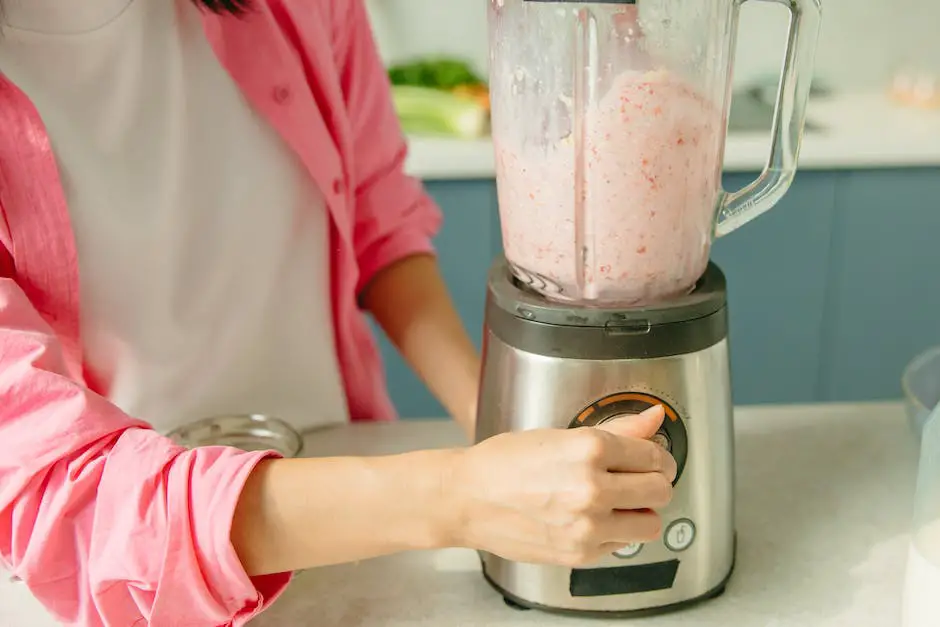The world of anti-inflammatory smoothies is a tapestry of flavors, enriched by the potent health benefits each ingredient brings to the table. From the vibrant berries and crisp leafy greens to the holistic spices, every component delivers a wealth of nutrition. It is profoundly intriguing how smoothie preparation merges the science of health with gastronomic creativity.
What to include in an Anti-Inflammatory Smoothie?
- Fruits and Vegetables
Fruits and Vegetables are an integral part of a healthy diet and many of them possess anti-inflammatory properties beneficial to the body. Berries, for instance, are rich in antioxidants known as anthocyanins, which have been associated with reduced inflammation. Among vegetables, broccoli is noteworthy for its sulforaphane content, an antioxidant that battles inflammation. Other examples include avocados, tomatoes, spinach, kale, oranges, and cherries.
- Herbs and Spices

- 2-Week anti-inflammatory meal plan.
- 45 Foods that Cause Inflammation
- 31 Things to Avoid on Food Labels
- Grocery Lists. Challenges. Symptoms Tracker
Several herbs and spices are also known for their strong anti-inflammatory properties. Curcumin, an active compound found in turmeric, is renowned for its anti-inflammatory benefits and is often used in various cultures for medicinal purposes. Similarly, ginger contains gingerol, another potent anti-inflammatory component and can be easily added to dishes or drinks. Cinnamon, cloves, and rosemary are other examples of anti-inflammatory herbs and spices.
- Healthy Fats and Proteins
Healthy fats and proteins should not be overlooked in an anti-inflammatory diet. Chia seeds and flaxseeds offer a plant-based source of these Omega-3 fats.
By understanding these foods and their anti-inflammatory properties, it becomes easier to select the right ingredients for an anti-inflammatory smoothie. An example: you could combine blueberries, spinach, and a tablespoon of flaxseeds in a blender for a simple, tasty, and inflammation-fighting beverage. Altogether, focusing on such nutrient-rich, anti-inflammatory foods may support overall health and wellbeing.
7 Amazingly Easy Anti-Inflammatory Smoothie Recipes
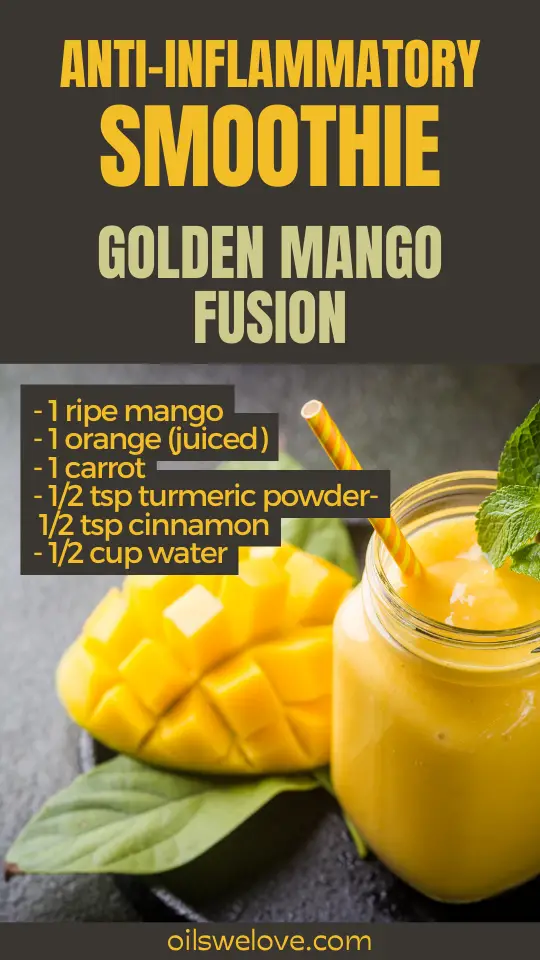
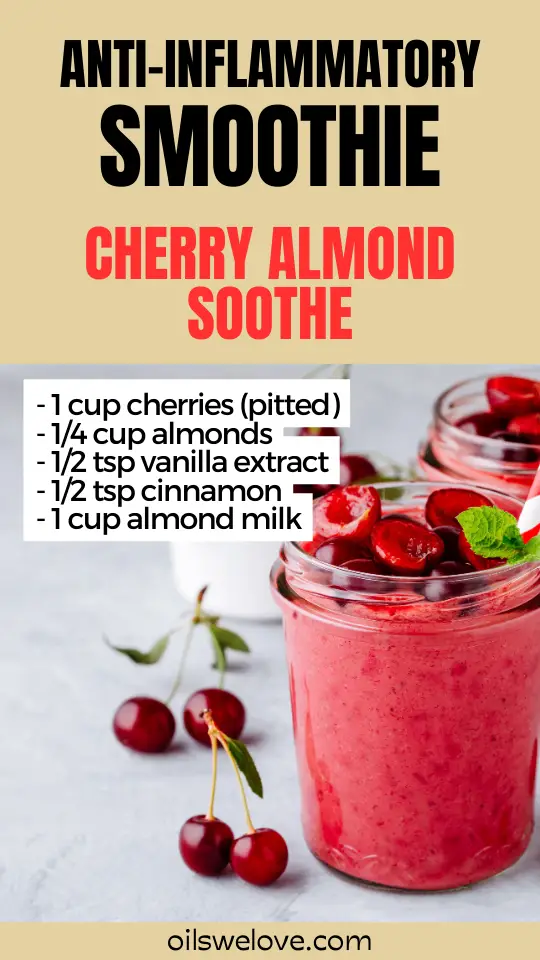
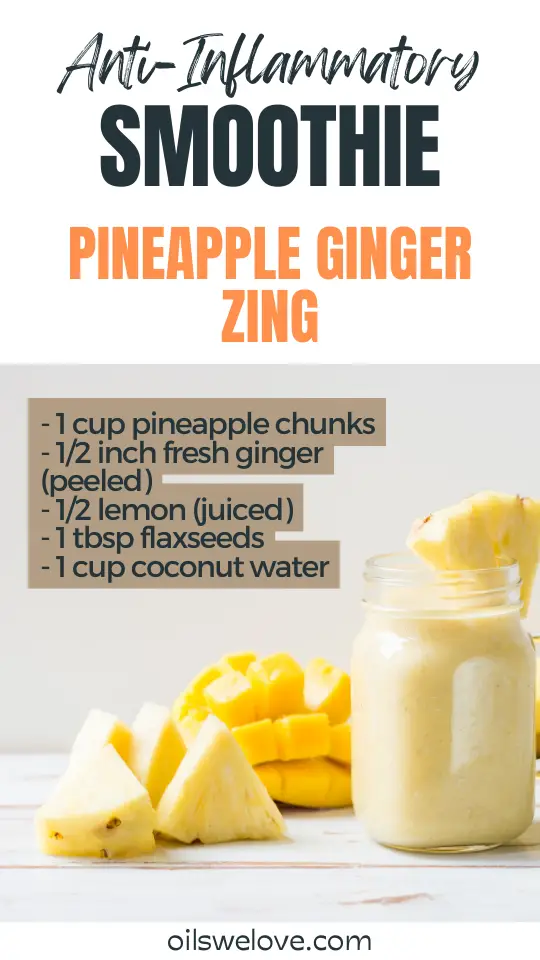
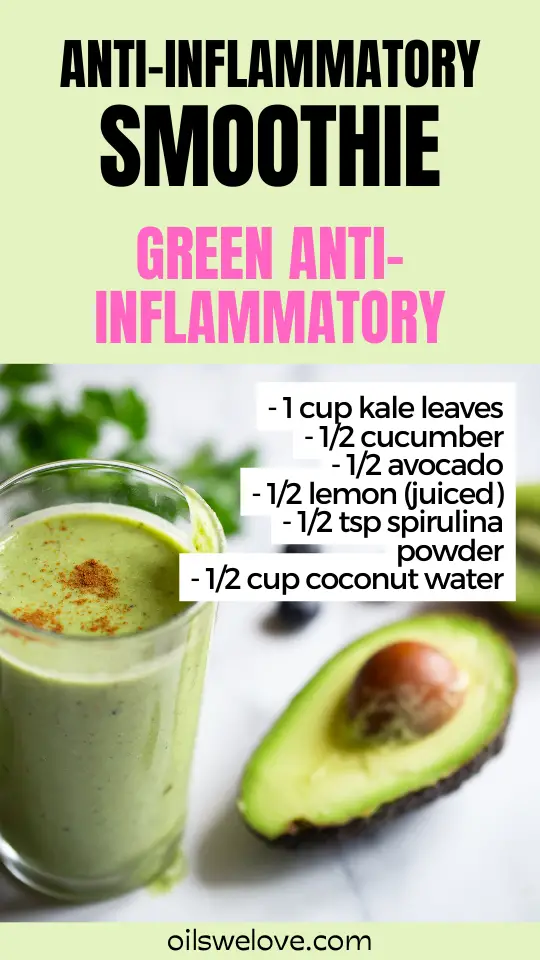
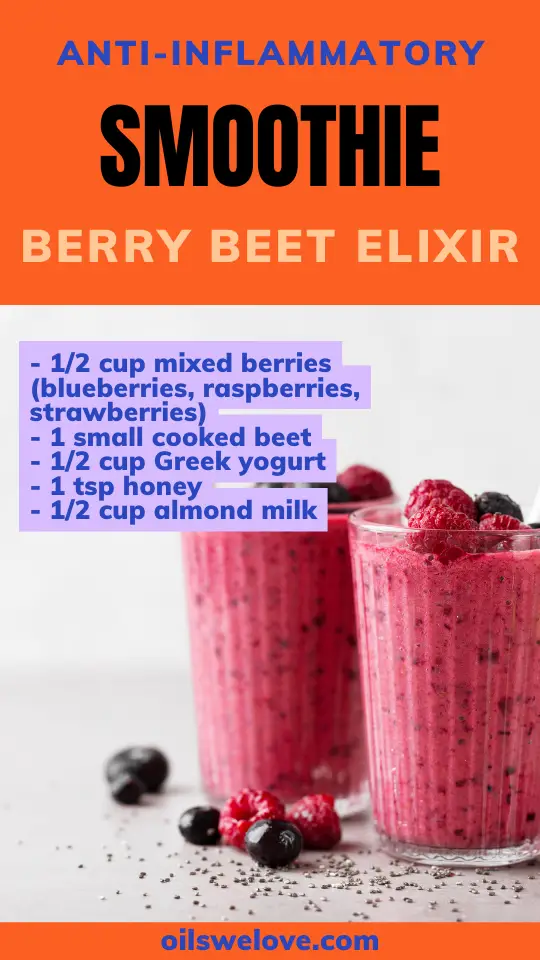
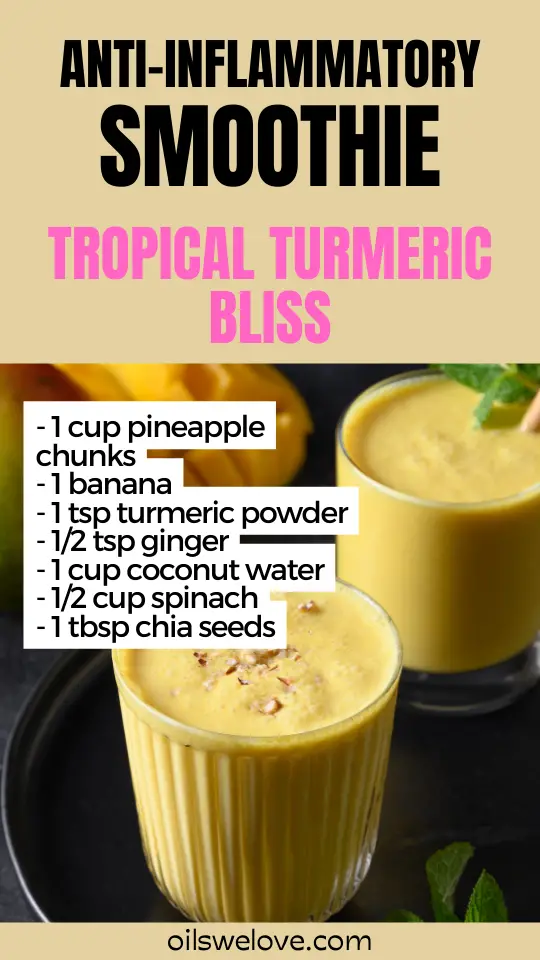
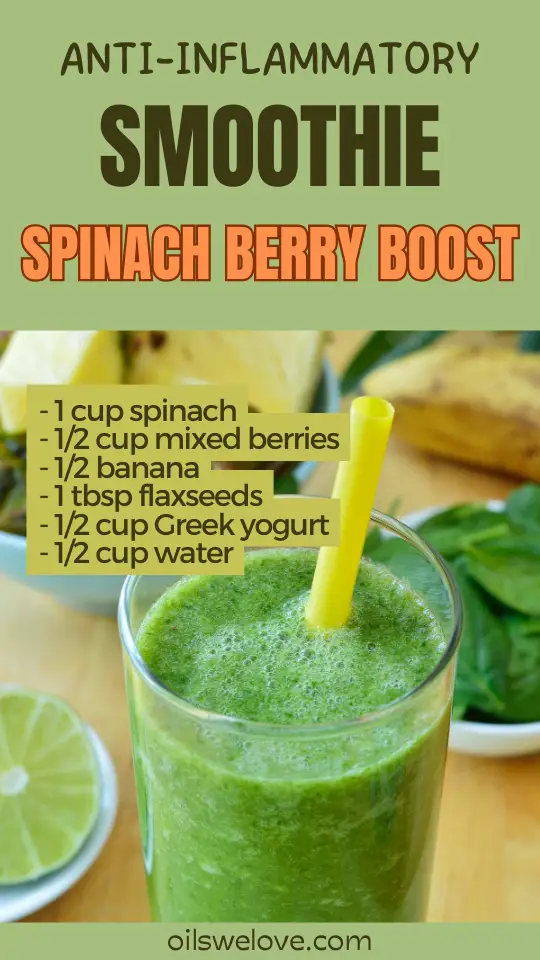
How to make your perfect smoothie
Basic Smoothie Preparation
Learning the basics of preparing a smoothie requires only a few steps. First, gather all the necessary ingredients. These include your base liquid (like soy, almond milk, or water), your main fruits or vegetables, and any extras such as protein powders, yogurt, or natural sweeteners. Then, place all of your ingredients in a high-powered blender and blend until smooth. If using produce, make sure to wash them thoroughly to remove any pesticides or bacteria before blending.
The Order of Ingredients
The order in which you blend your ingredients can impact the final consistency of your smoothie. Start by adding your liquid base. This could be anything from water, milk, almond milk, or yogurt. Next, add your fresh fruits and vegetables. If you’re using any powders such as protein powder, matcha or cacao, add them on top of the fruits and veggies. This way, the powder won’t stick to the bottom of the blender. Then add your frozen ingredients or ice, to help push all the ingredients down towards the blades during blending.
Blending Process
Start blending at the lowest speed, then gradually increase to the highest speed. This gradual increase helps to process the larger pieces at the bottom first, resulting in a smoother blend. Once all the ingredients have been thoroughly mixed and you’ve reached your desired consistency, stop the blender and serve the smoothie immediately.
Storing Leftover Smoothies
If you have leftover smoothies, you can store them in the fridge for up to 24 hours. To help preserve the freshness, pour the leftover smoothie into a jar with a lid, filling it up to the very top to prevent air from entering. This can help prevent oxidation, which might affect the flavor and nutritional value. You can also freeze leftover smoothies into popsicle molds for a healthy, refreshing treat on a later date.
Exploring Other Recipes and Variations
Once you’ve mastered your initial anti-inflammatory smoothie, start exploring other recipes and variations. This might involve including ingredients like flaxseeds, chia seeds, nuts, or kefir for variety and nutritional value.
Remember, the key to creating a successful smoothie recipe is balance. Balancing the flavors, textures, and nutrients will result in a smoothie that tastes good and supports your overall health.
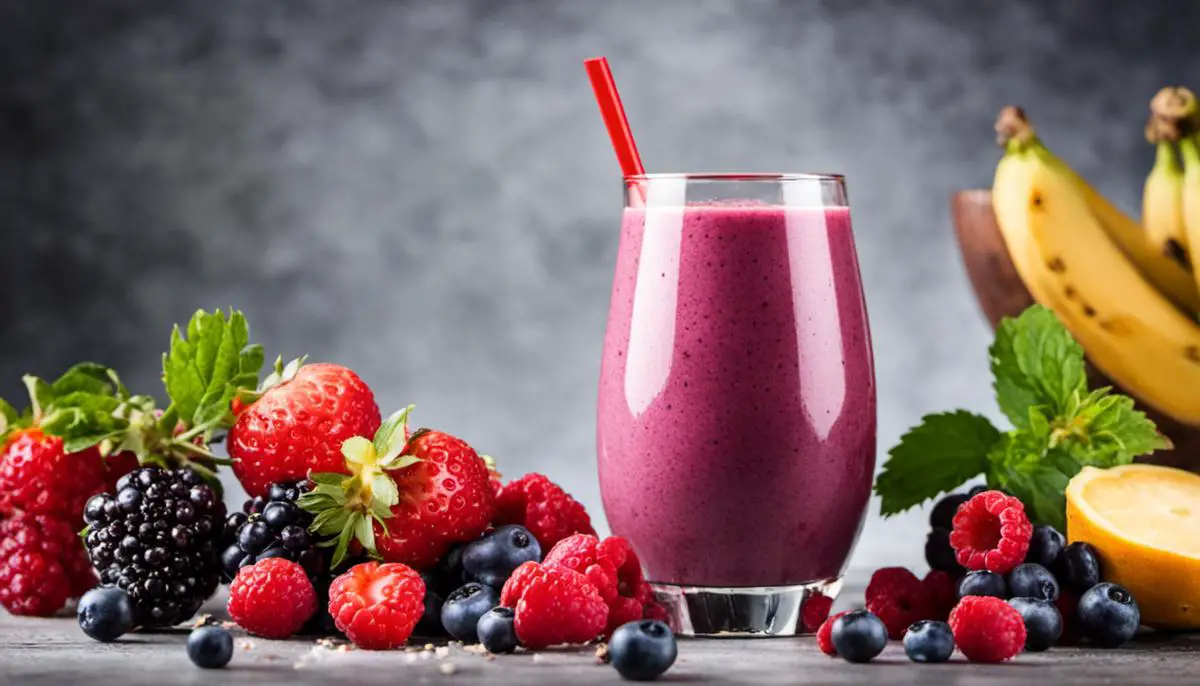
6 Must-Have ingredients for Anti-Inflammatory Smoothies
Anti-inflammatory smoothies are packed with fruits, vegetables and spices that contain compounds known to reduce inflammation in the body. In the right combination, these ingredients not only offer superior nutrition but can also contribute to a healthier immune response.
1. Berries: Nature’s Anti-Inflammatory Powerhouses
Berries of all kinds—blueberries, strawberries, raspberries, and blackberries—are loaded with antioxidants, specifically anthocyanins, which have strong anti-inflammatory effects. The vitamin C, fiber, and other nutrients in berries also contribute to overall health and wellness.
2. Spinach: Leafy Green with Wide-Ranging Benefits
Spinach is known for its high vitamin K content, which could help to regulate our body’s inflammatory response, in addition to its high fiber content, which aids in digestion. Its array of vitamins and minerals contribute to bone health and neurological function, and its antioxidants may support heart health and cancer prevention.
3. Ginger: Spice with Medicinal Qualities
Ginger has strong anti-inflammatory properties, thanks in part to the compound gingerol. It may help reduce muscle pain and soreness, ease menstrual pain, protect against stomach ulcers, and also lower blood sugars, which can indirectly reduce inflammation.
4. Turmeric: A Golden Anti-Inflammatory Ingredient
Turmeric, especially its component curcumin, is known for its potent anti-inflammatory and antioxidant advantages. It could alleviate symptoms of arthritis and may possess anticancer properties. Absorption of curcumin is increased when combined with black pepper.
5. Chia Seeds: Small Seeds with Big Benefits
Chia seeds are rich in fiber, protein, and a variety of micronutrients, including calcium. They’re a plant-based source of omega-3 fatty acids, a type of fat that’s known to have anti-inflammatory effects.
6. Oranges: Vitamin C and More
In addition to being a top source of immune-boosting Vitamin C, which has antioxidant properties that help combat inflammation, oranges offer other essential nutrients like potassium and calcium, fiber, and a variety of phytochemicals.
All of these ingredients together create a robust smoothie with wide-ranging health benefits. The combination of these nutrient-dense foods can help decrease inflammation, reduce pain, support immune function, and promote digestive health. Consumed consistently, anti-inflammatory smoothies can aid in maintaining overall health and wellbeing. They are a delicious, easy, and quick way to deliver a variety of health-boosting nutrients in a single serving.


